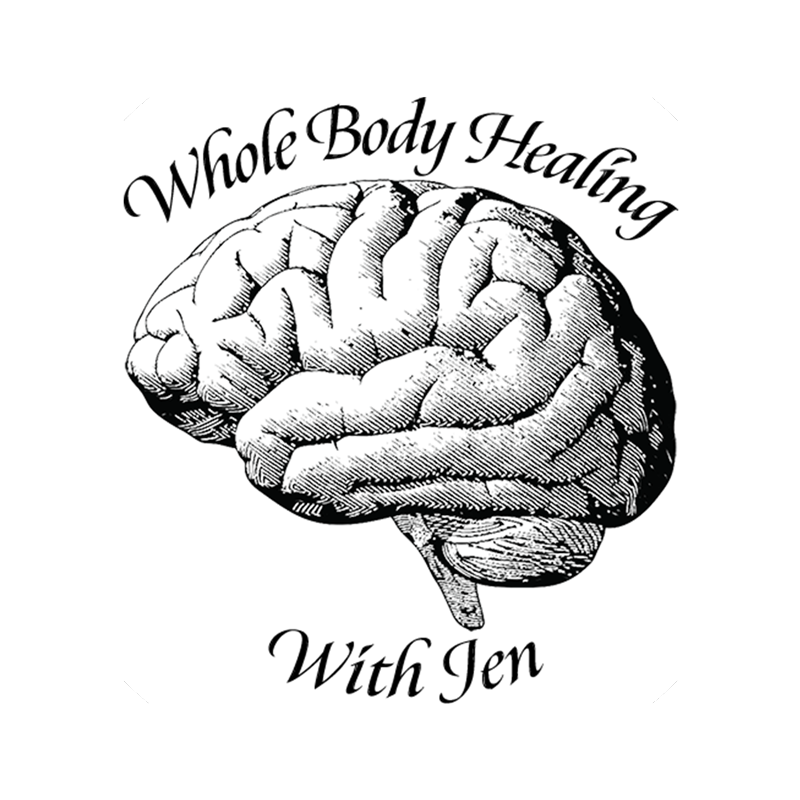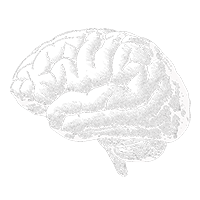The Power of the Vagus Nerve
The Power of the Vagus Nerve
If we are trying to understand the connection between mind and body, we must consider the vagus nerve. This is where all the systems of our body- where the autonomic nervous system intersects with our consciousness, emotions, and psychological state.
Our vagus nerve connects the brain stem to every major organ all the way down to our digestive tract. It is really three distinct nerves that are bundled together. These control the Social Engagement System (Ventral Vagal), Fight/Flight System (Sympathetic), and Freeze System (Dorsal Vagal). Each has a different function in orchestrating our bodily systems through signals from our nervous system. A healthy nervous system can easily dance between these systems depending on what it perceives that we need to do for survival.
All of these nervous system states have important functions. The problem is not having any one state activated, the problem is getting stuck in a survival state! Being chronically stuck in a fight/flight or freeze response can cause a wide range of physical and mental health symptoms all related to lack of flexibility in the nervous system. This can range from nightmares, emotional instability, asthma, blood pressure issues, heart irregularity, digestive problems, insomnia, depression, anxiety, and many other commonly diagnosed “disorders”.
What state are you stuck in?
Here are some clues to help you decipher what state your nervous system may be chronically stuck in:
| Ventral Vagal “Social Engagement” | Sympathetic “Fight/Flight” | Dorsal Vagal “Freeze” |
| “Just right” | “Too hard, too hot” | “Too soft, too cold” |
| Confident hand shake Steady eye contact Appropriately intimate with others Desires social connection Playful, fun Curious, eager to learn Compassion and empathy for others Nurturing behaviors Smooth digestion Strong immune system Balanced hormones Good blood pressure and healthy breathing patterns High tolerance for stressful situations, “shakes off” stress easily | Forceful or excessively tight handshake Eyes look like they are opened too wide/bug eyed Chronically tense muscles Sugar cravings Fast movement, always in a rush Verbally or emotionally aggressive, lashes out Agoraphobia Panic attacks Social anxiety Temper tantrums Destructive High blood pressure Constipation Frequently sick Sensory sensitivities | Limp handshake Avoids eye contact Excessively sweaty Helpless, always perceives self as victim Excessive guilt or shame Apathetic, lethargic Feel emotionally “numb” Suicidal tendencies Memory problems Dissociative Weak muscles, fatigue Lack of facial expression Eyes look like they are not open enough, look sleepy Low blood pressure Nausea, diarrhea Autoimmune disease POTS/dysautonomia |
Is my ventral vagal nerve activated?
Although you can usually effectively answer this question by examining the symptoms listed above, you can also observe this activation physically through the symmetry of your soft palette on either side of your uvula. In the mirror or with help from a friend, open your mouth and lower your tongue. Say, “ah, ah, ah” and observe the movement of the arch on either side of your uvula. Both sides should be symmetrical, and raise simultaneously in response to this contracting sound. If there is a depression on one side or they do not raise symmetrically, this is indicative of low activation of your ventral vagal nerve.

Graphic from “Accessing the Healing Power of the Vagus Nerve” by Stanley Rosenburg
Another method is to assess ventral vagal activation in your diaphragm (breathing muscles). Place your hands on your lowest three ribs and sense movement while you breathe. Place your hands on your chest or shoulders and repeat. If there is more movement in your chest and shoulders when you breathe, this indicates being stuck in a survival state. Your lower ribs moving freely as you breathe is a sign of ventral vagal activation.
The most effective way to restore balance is to increase activation in your Ventral Vagal nerve, which controls your Social Engagement System. This is a part of our parasympathetic nervous system and should be the baseline state of our nervous system. Our Ventral Vagal nerve is the only one that spreads up into the neck and face to activate the subtle movements of our mouth, eyes, ears, and other nuanced expressions related to language and social connection.
Low “tone” or activation in our Ventral Vagal nerve can be caused by chronic stress, acute traumatic experience, developmental trauma from childhood, misalignment of the jaw, nutrient deficiencies, physical trauma to the head, neck or face, antibiotic use and microbiome imbalance, and “forward head posture” from sedentary lifestyle practices. As a result of these factors, the ventral vagal nerve fires less actively and circulation is cut off to the various branches that spread into the face, neck and jaw.
In order to improve tone and oxygenation in this branch of the vagus nerve, we can engage in simple movement and lifestyle practices. As these nerves come back online in their full capacity, our physical and structural alignment will naturally begin to come back into place. You will also notice changes in your mood, like more of a desire to connect socially, increased self confidence, desire to learn and express yourself, greater sense of ease and wellbeing, better tolerance for stress and sensory stimulation, and reduced incidence of chronic health problems such as cardiovascular, digestive and breathing issues.
Because many of us have been stuck in a survival state chronically, it takes consistent and long term implementation of these tools to see significant changes in our nervous system patterns.
All of these exercises improve “tone” or activation of the ventral vagal nerve, increase blood flow to the face, jaw and neck, and maximize movement in the cerebrospinal fluid to increase tissue flexibility and improve elimination of metabolic waste.
The Basic Exercise
This exercise uses your optical muscles to release tension and improve circulation to the nerves in your face, neck and jaw. It gently realigns the C1 and C2 vertebrae creating an increase in movement of the cerebrospinal fluid.
Lie on your back and weave your hands behind your head, resting your index fingers at the base of your skull/top of your neck.
Position your eyes and head facing forward. Without moving your head or neck, move your eyes as far as they can go to the right. Hold this position for 30 seconds to two minutes, until you naturally feel the urge to sigh, swallow, or yawn. This is a sign of nervous system release.
Bring your eyes back to the center. Repeat on the left side.
Roll onto one side and push yourself into a seated position.
The Basic Neck Release
This exercise gently promotes fascial release in the eyes, jaw and neck, realigning the C1 and C2 vertebrae and stimulating your social engagement system. It also improves your posture and breathing capacity.
Stand with straight and well aligned posture as much as you can. Position your eyes and head facing forward. Without moving your head or neck, move your eyes as far as they can go to the right. Keeping your eyes in this position, gently lower your right ear to your right shoulder. Hold this position for 30 seconds to two minutes, until you naturally feel the urge to sigh, swallow, or yawn. This is a sign of nervous system release.
Bring your eyes and head back to the center. Repeat on the left side.
Bring your eyes and head back to the center. This time, you will repeat again both sides, but with your eyes rotating to the opposite side of your ear and shoulder rotation. In other words, move your eyes as far as they can go to the right, but this time lower your left ear to your left shoulder. Hold and wait for a sign of release. Bring your eyes and head back to the center. Move your eyes as far as they can go to the left, and lower your right ear to your right shoulder. Hold and wait for a sign of release. Bring your eyes and head back to the center.
The Basic Trapezius Release
There are cases in which the primary tension blocking the activation of the ventral vagal nerve is in the shoulders or trapezius muscles rather than the upper neck. This exercise can improve posture, breathing capacity, and stimulate your social engagement system.
Cross your arms in front of your chest, holding your opposite elbows with your hands. Now swing your elbows back and forth vigorously for about one minute.
Cross your arms and bring them in front of your neck, holding your opposite elbows with your hands. Now swing your elbows back and forth vigorously for about one minute.
Cross your arms and bring them above your head, holding your opposite elbows with your hands. Now swing your elbows back and forth vigorously for about one minute.
The Fascial Muscle Release
In some cases the primary tension source is actually in the muscles of the face. This can cause a dampening of the social engagement system as nerves cannot properly stimulate the small and complex muscles that create subtle facial expressions and vocal prosody. This exercise targets pressure points in the face that lead to facial relaxation and social re engagement.
With one finger, find the groove in the bone between your cheek bone and upper jaw, just to the outer edge of your nostril. Once you find the correct placement, lighten the pressure so your finger is barely brushing the skin. Gently push the skin up, down, to the right, and the left. Only move about a 1/8 of an inch at a time and notice any resistance. If you feel any resistance, hold the position until you feel a release. Then continue.
Next, push down with slightly more pressure in the same spot, so your finger sinks slightly into the muscle. Repeat the testing for resistance and wait for release.
Next, push down with slightly more pressure in the same spot, so your finger pushes down gently down to the bone. Repeat the testing for resistance and wait for release.
Another important pressure point targets the fascia around the eyes. With one finger, press the inside corner of your eyebrow, right where the top of your nose meets your eyebrow bone. It is a spot we instinctively squeeze when stressed, tired, or fatigued from wearing glasses.
Once you find the correct placement, lighten the pressure so your finger is barely brushing the skin. Gently push the skin up, down, to the right, and the left. Only move about a 1/8 of an inch at a time and notice any resistance. If you feel any resistance, hold the position until you feel a release. Then continue.
Next, push down with slightly more pressure in the same spot, so your finger sinks slightly into the muscle. Repeat the testing for resistance and wait for release.
Next, push down with slightly more pressure in the same spot, so your finger pushes down gently down to the bone. Repeat the testing for resistance and wait for release.
Additional Exercises to Stimulate the Ventral Vagal Nerve
Humming or singing for 20 minutes
Belly/diaphragmic breathing, at least 10 breaths
Stimulating the gag reflex with a tongue depressor
Gargling water and swallowing water vigorously
Lightly stroking the face, bringing your awareness to your fingertips
Practice talking in a “sing song” voice (increasing vocal prosody)
Eye gazing with a trusted friend or partner
Cold therapy (cold showers or cold plunges)
Increase levels of vitamin B1 (reduce refined carbohydrate consumption, increase consumption of pork, salmon, mussels, acorn squash, asparagus, brown rice, supplement if necessary)
Increase levels of acetylcholine (reduce refined carbohydrate and processed food consumption, increase consumption of chicken, eggs, beef, shrimp, supplement if necessary)
Supplements such as acetyl-l-carnitine, alpha-lipoic-acid, and huperzia serrata may also be indicated
Many of the exercises in this article can be found in the book “Accessing the Healing Power of the Vagus Nerve” by Stanley Rosenburg. I highly recommend this book for a deeper dive into all things vagus nerve related.
Increasing the tone of our vagus nerve is often a missing piece in treatment planning. But when addressed from a holistic perspective, this is one of the most important pieces of the puzzle. If we are not addressing the overall state of your nervous system health, no other treatment will be as effective. We need to be in a socially engaged state to heal, so these practices should be the foundation of all your work. Although simple, repeated over time they can have a profound effect on your mind body health.


